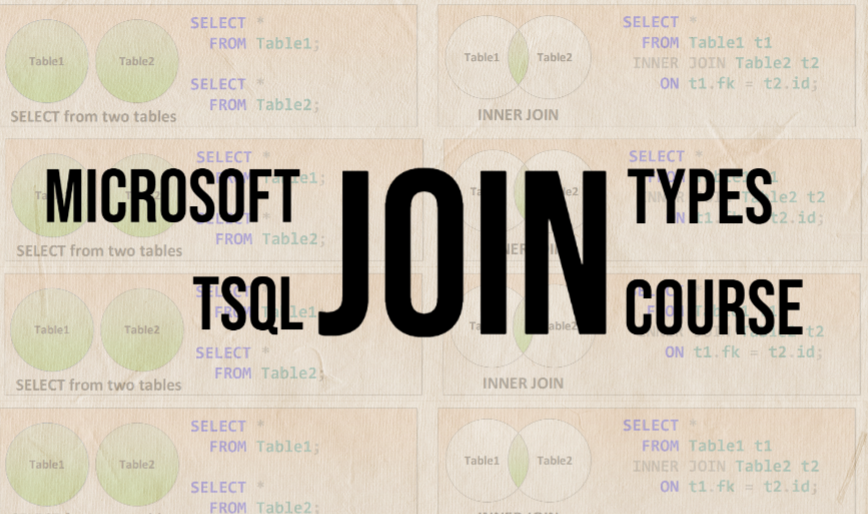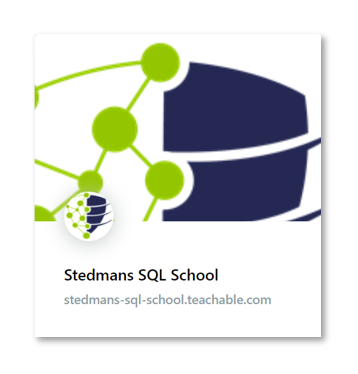Learn the difference between Full Join vs Cross Join today.
Full Join vs Cross Join: Understanding the Key Differences
When working with SQL Server, understanding advanced join types is crucial for building complex queries. Two often-confused join types are the full join and the cross join. Knowing when to use full join vs cross join can help you craft efficient and accurate queries, avoiding unnecessary data errors or performance issues.
In this article, we’ll explore the differences between full join vs cross join, including their use cases and practical examples. By the end, you’ll see why mastering these join types is essential for SQL professionals—and why you should sign up for our JOIN Types Class for deeper insights.
What is a Full Join?
A full join, or full outer join, combines the results of both a left join and a right join. It returns all rows from both tables, matching rows where possible, and filling unmatched columns with NULL values.

Example Scenario:
You have two tables:
- Customers: A list of customers with their IDs and names.
- Orders: A list of orders placed, including customer IDs.
If you want to create a list that includes all customers and all orders, even if some customers haven’t placed orders or some orders don’t have associated customers, a full join is the solution.
SELECT Customers.CustomerID, Customers.Name, Orders.OrderID
FROM Customers
FULL JOIN Orders ON Customers.CustomerID = Orders.CustomerID;
Key Characteristics of Full Join:
- Includes all rows from both tables.
- Matches rows where possible.
- Fills unmatched columns with NULLs for missing data.
- Ideal for comprehensive reporting or auditing when unmatched data is important.
What is a Cross Join?
A cross join combines every row from the first table with every row from the second table, producing a Cartesian product. Unlike a full join, a cross join doesn’t rely on matching criteria.
Example Scenario:
You have two tables:
- Products: A list of products for sale.
- Stores: A list of store locations.
If you want to create a dataset that lists every possible combination of products and stores (e.g., for inventory or distribution planning), a cross join is the tool for the job.
SELECT Products.ProductName, Stores.StoreName
FROM Products
CROSS JOIN Stores;
Key Characteristics of Cross Join:
- Produces a Cartesian product of both tables.
- Returns every possible combination of rows.
- Ideal for generating all pairings for analysis or planning.
- Can result in very large datasets if tables are large.
Full Join vs Cross Join: Key Differences
| Aspect | Full Join | Cross Join |
|---|---|---|
| Primary Purpose | Combines data from two tables, matching rows where possible and keeping all unmatched rows. | Produces every possible combination of rows from two tables. |
| Resulting Data Set | Includes all rows from both tables, with NULLs for unmatched data. | Cartesian product of the two tables, with no filtering or matching. |
| Use Case | Comprehensive reporting or audits. | Generating all combinations for analysis. |
| Row Matching | Matches rows based on ON clause conditions. | No matching criteria used. |
Common Use Cases for Full Join vs Cross Join
Full Join
- Creating reports that combine datasets with partial overlaps, such as customer lists and order histories.
- Auditing data completeness to identify gaps, such as missing foreign key relationships.
- Merging two datasets while preserving all data points from both sources.
Cross Join
- Generating all product-location pairings for distribution planning.
- Simulating combinations of two datasets for testing or hypothetical analysis.
- Analyzing potential matchups or pairings in sports scheduling.
Common Mistakes to Avoid
Full Join
- Unmanaged NULL Values: When working with full joins, always handle NULLs in calculations or filtering to ensure accurate results.
- Overuse: If you only need data where matches exist, a full join may return unnecessary rows and slow down queries.
Cross Join
- Unintended Cartesian Products: Cross joins can generate massive datasets if tables are large, leading to performance issues. Use with caution and only when all combinations are truly needed.
- Lack of Filtering: Without additional WHERE clauses, cross joins can produce irrelevant results.
Performance Considerations
The difference between full join vs cross join extends beyond functionality to include performance. Here are some tips for using these joins effectively:
- Optimize Full Joins: Ensure indexes are applied to columns used in the ON clause for better performance.
- Limit Cross Joins: Be mindful of table sizes, as the Cartesian product grows exponentially with the number of rows. Use WHERE clauses or additional filtering to reduce unnecessary combinations.
Deepen Your Understanding of SQL Joins
While full join vs cross join are powerful tools in SQL Server, mastering their usage requires a deeper understanding of SQL join types. That’s where the JOIN Types Class at Stedman SQL School comes in.
What You’ll Learn in the JOIN Types Class:
- Detailed explanations of all SQL join types, including inner, left, right, full, and cross joins.
- Real-world scenarios for each join type and when to use them.
- Advanced techniques like anti-joins and self-joins.
- Performance optimization strategies for complex joins.

Sign Up Today and Master SQL Joins!
Don’t let confusion about full join vs cross join hold you back. Enroll in our JOIN Types Class to enhance your SQL Server expertise and build queries with confidence.
Questions? Reach out via our Stedman Solutions Contact Page.
Take your SQL skills to the next level and gain mastery over every join type with Stedman SQL School!
Happy Querying
Getting Help from Steve and the Team
Contact us for your Free 30 minute consultation ORschedule your appointment now.